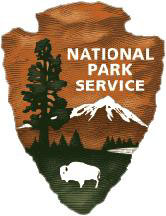 In 1995, the soybean checkoff funded key research on soy biodiesel quality. The same year, Yellowstone National Park began serving as the soy biodiesel testing ground for the National Park Service. A decade later, the market for soy biodiesel is flourishing, and its use has spread to more than 20 other national parks and among thousands of other diesel users such as farmers and truckers.
In 1995, the soybean checkoff funded key research on soy biodiesel quality. The same year, Yellowstone National Park began serving as the soy biodiesel testing ground for the National Park Service. A decade later, the market for soy biodiesel is flourishing, and its use has spread to more than 20 other national parks and among thousands of other diesel users such as farmers and truckers.
United Soybean Board director Chuck Myers of Nebraska and Jim Evanoff, Environmental Manager for Yellowstone National Park held a press conference Tuesday from Jackson Lake Lodge in Grand Teton National Park to talk about the use of biodiesel in our national parks.
“We’re here to recognize ten-plus years of successful use of biodiesel in Yellowstone National Park and Grand Teton National Park,” said Myers. “It confirms that biodiesel can be used successfully in one of the harshest all weather climates in the United States.”
“Yellowstone, being the world’s first national park, we feel an obligation to be first at doing the right thing environmentally,” Evanoff said. “The most successful has been the introduction and advancement of biodegradable fuels in Yellowstone Park.”
You can listen to the opening statements of Myers and Evanoff here:  Biodiesel Parks (6 min MP3)
Biodiesel Parks (6 min MP3)
According to the state of Montana, the use of biodiesel by Yellowstone has reduced the amount of carbon dioxide emissions by 500 tons per year.
The use of biodiesel in the National Park Service now includes 23 parks nationwide with over 1,000 different diesel applications including conventional diesel vehicles, boats, heavy equipment, and stationery applications such as boilers and stand-by generators. Blends range from 2 percent to 100 percent biodiesel.

